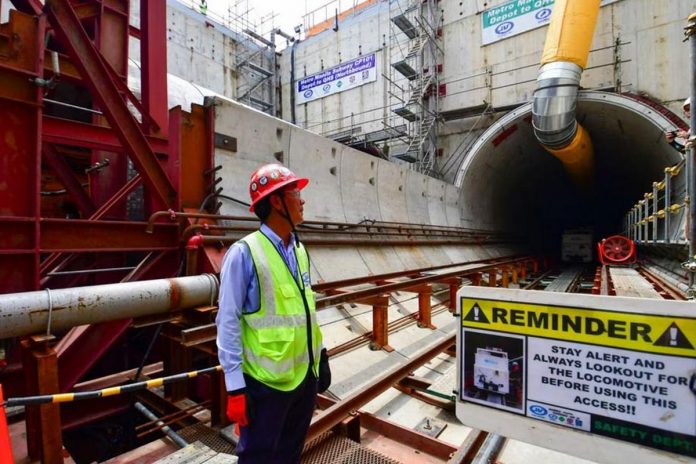
THE completion of the Metro Manila Subway Project, billed as the “Project of the Century,” has been moved anew, the Department of Transportation (DOTr) announced yesterday.
DOTr said it aims to complete the construction of the project in 2028, or before the end of the Marcos administration, and to open the subway to the public by 2029.
The agency has scrapped its plan to partially operate Valenzuela, Tandang Sora, and North Avenue stations in 2027 – these stations were originally supposed to have opened in 2022.
The agency said opening the subway with all 17 operational stations is more optimal for the passengers.
“We are not looking into the partial operability of 2027. Ang target na natin is full operations ng 2029. Kasi kung magpa-partial operability lang tayo to a certain station, hindi siya optimized for our passengers, di ba? It would be best that we operate it kapag buo na,” DOTR Assistant Secretary for Rails Jorjette Aquino said.
Transport officials yesterday showed the progress of the Metro Manila Subway Project in Valenzuela. The 33-kilometer underground rail is 33 percent complete.
Based on feasibility studies, the subway will reduce travel time between Valenzuela City and Ninoy Aquino International Airport Terminal (NAIA) from one hour and 10 minutes to just 41 minutes, serving an estimated 519,000 passengers daily.
The Metro Manila Subway will connect Valenzuela City to NAIA 3 and FTI in Taguig, spanning seven cities, municipalities, and three business districts. It will also connect to the MRT-3, the LRT-2, and the Philippine National Railway lines.
“It could have been faster kung hindi tayo tinamaan ng pandemic. ‘Yung speed ng paghukay ng tunnel boring machine ‘yun naman na ‘yung standard speed so kahit gusto pa natin bilisan hanggang dun na lang siya. By the end of this year or by December this tunnel boring machine we are expecting it to be at Quirino Station. Yung North Ave station natin we are expecting by November this year,” Aquino said.
Subway fare
In 2017, the proposed fare was P22 boarding fee plus P2 per kilometer. The end-to-end fare will be P88.
However, DOTr said this fare rate is still being determined and could be higher once it opens to the public in 2029 and the Operations and Maintenance team is on board.
“Nadagdagan pa tayo ng apat na istasyon so we’re expecting to have another study for the fare. Sa ngayon hindi pa namin masabi kung paano fare structure niya,” Aquino said.
Japanese technology
The joint venture, including Shimizu Corp., Fujita Corp. and Takenaka Civil Engineering Co. of Japan, and EEI Corp. from the Philippines, was tapped to design and build the depot in Valenzuela City, Quezon Highway station, Tandang Sora station, and North Avenue station.
The Metro Manila Subway will leverage Japanese technology to make the structure flood and earthquake-proof, the DOTr said.
“Our Japan design team designed this in a way similar to Japan. It is elevated. There’s even a simulated exercise when water cannot pass through from outside,” DOTr undersecretary for Rails Cesar Chavez said.
Originally estimated to cost P350 billion, the project’s total cost was raised to P488 billion in 2021 because of four additional stations.
From Valenzuela, the excavation will run for a kilometer and a half to reach the next station, which is Quirino in Novaliches.
The tunnel boring machine will lay down eight to 10 meters of tunnel segments per day, excavating around 307 to 384 cubic meters of soil in the same time frame.
Two tunnel boring machines are at work at the Valenzuela depot: northbound and southbound. Japanese contractors JIM Technology Corporation manufactured the tunnel boring machines in its factory in Tsuri, Japan. (ABS-CBN News)



